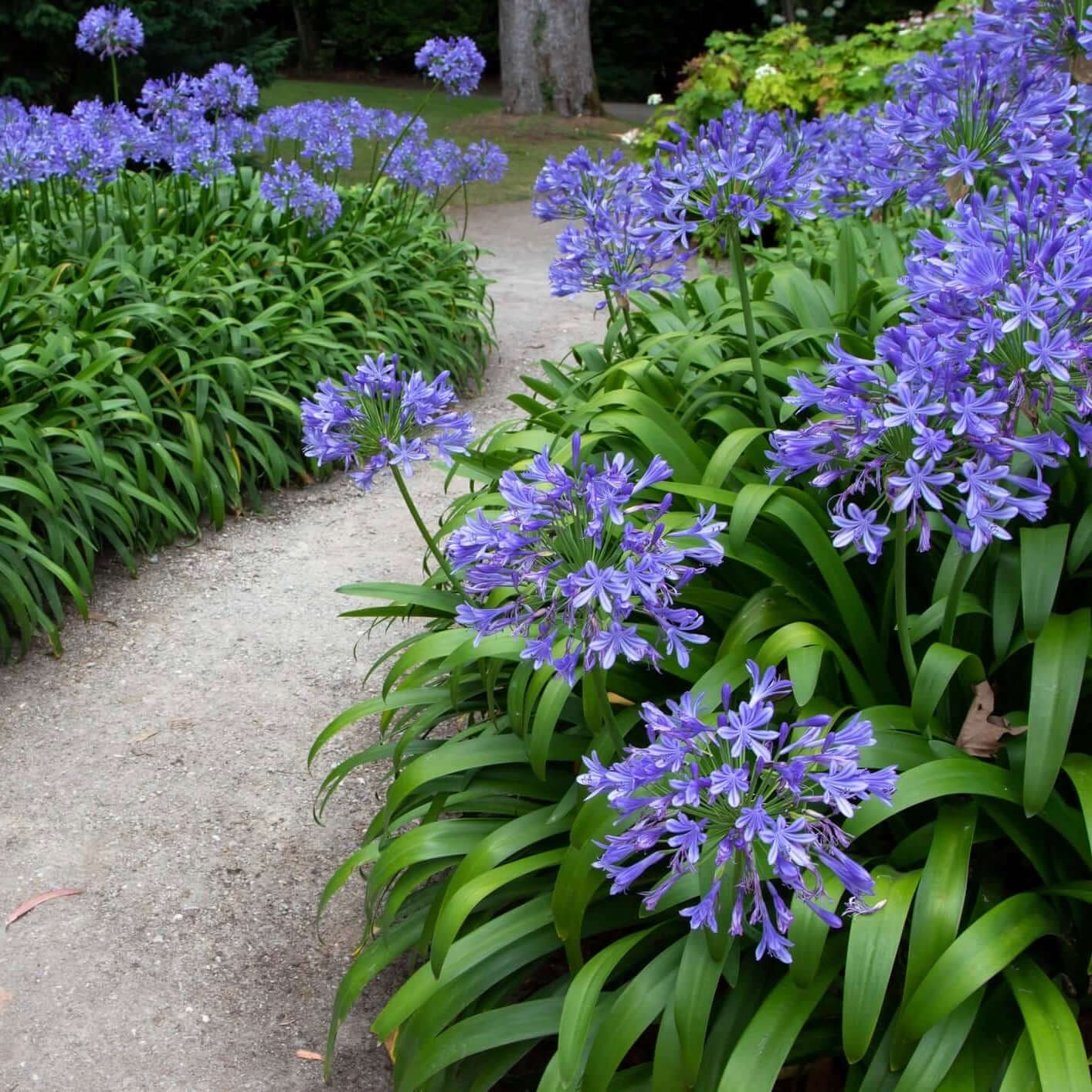Growing Agapanthus: A Total Guide to Beautiful Blooms
Growing Agapanthus: A Total Guide to Beautiful Blooms
Blog Article
Releasing the Secret to Effective Agapanthus Farming: Tips and Tricks for a Flourishing Garden
In the world of horticulture, cultivating agapanthus effectively calls for a strategic approach that incorporates different aspects of plant care. By understanding the nuances of agapanthus farming, one can produce an atmosphere where these plants thrive and flower generously.
Growing Agapanthus: Ideal Practices
When planting Agapanthus, appropriate soil prep work is crucial for ensuring successful growth and growth of these lovely flowers. Agapanthus, commonly referred to as Lily of the Nile or African lily, grows in well-draining soil with a slightly acidic to neutral pH degree - Agapanthus. Prior to planting, it is vital to change heavy clay soils with organic issue such as compost or peat moss to boost drainage and supply crucial nutrients for the plants
To plant Agapanthus, select a place that receives full sunlight to partial shade, as this will certainly advertise healthy and balanced development and plentiful blooming. Dig a hole twice the diameter of the plant's root round and put the Agapanthus at the same depth it was formerly expanding. Carefully backfill the opening with soil, weighing down firmly to eliminate any kind of air pockets around the roots.
Water the recently grown Agapanthus extensively and remain to keep the soil evenly moist, particularly during the plant's energetic expanding period. Agapanthus. Using a balanced plant food once a month can additionally sustain the plant's growth and blooming. By following these finest methods for planting Agapanthus, you can develop a sensational screen of these captivating flowers in your yard
Perfect Dirt Conditions for Agapanthus
For optimal development and growing success of Agapanthus plants, guaranteeing the soil conditions are ideal is essential. Agapanthus chooses dirt that is rich in nutrients, so integrating a balanced fertilizer during the expanding period can promote healthy growth and dynamic blooms.

Watering and Feeding Tips
To make certain healthy development and lively blossoms, correct watering and fertilizing strategies are vital for effective Agapanthus growing. Agapanthus plants gain from regular watering, specifically throughout the growing period. It is advised to water deeply when a week, guaranteeing the soil is wet but not waterlogged. During heat or in pots, even more frequent watering may be required to avoid the soil from drying out completely.
When it comes to feeding Agapanthus, a well balanced fertilizer with equivalent parts nitrogen, phosphorus, and potassium can be applied in the springtime to advertise healthy growth and blooming. Slow-release fertilizers are optimal for providing nutrients progressively over an extensive period. Avoid over-fertilizing, as this can lead to too much foliage growth at the cost of flowers.
Additionally, including raw material like garden compost into the soil can boost nutrient degrees and enhance dirt structure, assisting in the general health and wellness of the Agapanthus plants. By complying with these watering and fertilizing pointers, garden enthusiasts can ensure their Agapanthus plants grow and produce stunning screens of flowers.
Pruning and Deadheading Strategies
Appropriate pruning and deadheading techniques play a crucial duty in maintaining the health and aesthetics of Agapanthus plants, matching the vital techniques of watering and fertilizing for effective cultivation. Trimming Agapanthus involves getting rid of invested blossom heads, dead or yellowing fallen leaves, and total shaping of the plant to promote much better growth. Deadheading, the navigate to this website process of eliminating faded blossoms, not only boosts the plant's appearance however additionally encourages additional flowering.
When deadheading Agapanthus, it is recommended to clip off the flower stem at the base utilizing sharp, tidy shears. This procedure redirects the plant's energy from seed manufacturing back into root and vegetation development, promoting a healthier and a lot more durable plant. Normal deadheading can expand the growing duration of Agapanthus and prevent self-seeding, which can result in congestion.
In visit this website terms of trimming, Agapanthus generally gain from a light trim after blossoming to clean up the plant and motivate fresh growth. Cutting down the spent blossom stems and getting rid of any type of broken or dead vegetation helps keep the plant's vigor and total appearance. Nonetheless, it is important to avoid cutting into the crown of the plant, as this can deteriorate its health.

Protecting Agapanthus From Pests and Diseases
Carrying out reliable insect and illness monitoring techniques is essential to guarding the health and vitality of Agapanthus plants in cultivation. One usual pest that affects Agapanthus is the Agapanthus borer, a caterpillar that passages into the plant, causing damage to the blossoms and leaves.
In enhancement to parasites, Agapanthus are susceptible to conditions such as origin rot and fungal leaf places. By staying attentive and addressing parasite and disease problems without delay, garden enthusiasts can help their Agapanthus flourish and grow.

Verdict
In conclusion, successful cultivation of agapanthus needs proper planting techniques, excellent soil problems, adequate watering and fertilizing, normal trimming and deadheading, and security from bugs and illness. By following these suggestions and methods, garden enthusiasts can make certain a prospering yard filled up with beautiful agapanthus blooms. Agapanthus. Keep in mind to keep consistent care and focus to detail to promote the wellness and long life of these stunning plants
When growing Agapanthus, proper dirt prep work is crucial for ensuring successful growth and advancement of these lovely blossoms.Water the recently grown Agapanthus extensively and continue to keep the soil equally damp, especially throughout the plant's active growing season.For optimum development and growing success of Agapanthus plants, guaranteeing the soil conditions are suitable is essential. When planting or hair transplanting Agapanthus, make sure the soil is well-prepared to supply the needed foundation for the plants to establish basics themselves effectively. One typical bug that impacts Agapanthus is the Agapanthus borer, a caterpillar that passages into the plant, causing damage to the flowers and leaves.
Report this page